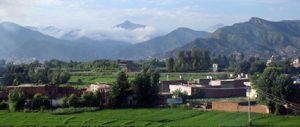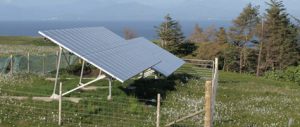India’s seventeenth century Moghul emperor Jahangir is probably best known for his comment on the valley of Kashmir: “If there is paradise on earth, it is this, it is this, it is this.” For 20 years, few outsiders have seen this paradise, as insurgency-related conflict rendered Kashmir a global trouble spot. But now that the violence is on the wane and there is talk of paradise regained, haphazard hotel construction and rubbish threaten to spoil this heavenly abode.
Regulations to manage rubbish – or solid waste, as the experts like to call it – were almost totally ignored during the atmosphere of violence that reigned for 20 years. The few hardy tourists who did venture into Kashmir despite the danger were not large enough in number for this to become a major problem.
Recent improvements in the security situation have led to a surge in tourism. Some 1.4 million tourists visited Kashmir in the summer of 2011, according to official figures. With half a million people directly or indirectly involved in the valley’s tourism industry, this is now easily the biggest contributor to the local economy. So the boom in tourist numbers is cause for joy, and has also led to a boom in hotel construction, especially in the famed resorts of Pahalgam, Gulmarg and Sonamarg.
But there is little overall planning in the construction process. Most hotels try to maximise the number of rooms, even if they block the best views of the Himalayan peaks in the process. The three major resorts are fast becoming concrete jungles.
With tourists from all over India and the world moving into Kashmir in droves, rubbish now threatens not just the ecology but the tourism industry itself. Environmentalists are already expressing their concerns about the policy paralysis.
Environmental experts maintain that construction should be prohibited within these resorts. But the government has not only allowed construction of hotels right on the most scenic spots, but has also failed to provide adequate disposal systems for solid and liquid waste.
Similar destruction is visible in the state’s other famous tourist area of Ladakh, the cold desert in the high Himalayas that abuts the Kashmir valley. Few of the 400-odd hotels and guest houses in Ladakh have a sewage disposal system. The only saving grace is a total ban on polythene bags.
To make things worse, the state also suffers from major electricity shortages, which means hotels, restaurants, shops and commercial enterprises all use highly polluting diesel generators for hours every day. Environmentalists are fearful of the effect on the surrounding glaciers and endangered animals – like the snow leopard and the red deer – in the state’s protected forests.
The Jammu and Kashmir state government’s Environment and Remote Sensing Department recently released a report calling for immediate measures to undo the environmental damage caused by unplanned construction at the famous resort Sonamarg, which lies some 90 kilometres north-east of the summer capital Srinagar.
“While development of modern infrastructure is of paramount importance for meeting the needs of the tourism industry, it is important to design such development in an eco-friendly fashion to preserve and conserve the fragile ecology and environment of Sonamarg,” the report warns.
“The development which has already taken place at Sonamarg or is in progress has a serious adverse impact on the ecology and environment.” The waste generated by hundreds of thousands of tourists is thrown around without any treatment or scientific management, according to the study. And all untreated effluents find their way to the Indus River, which straddles this beautiful resort, often called the “golden meadow”. “This causes extensive pollution in the river because no Sewage Treatment Plant (STP) is in place,” the report says.
In terms of popularity, Sonamarg is a relatively recent addition to Kashmir’s tourist map. Areas outside the town remain idyllic. But many people worry the area will soon suffer a similar fate to the better-known tourist resorts Pahalgam and Gulmarg, where unconstrained tourism has caused havoc.
Citizens have started to take action. Local NGO Pahalgam Peoples Welfare filed a public interest lawsuit in the Jammu and Kashmir High Court against illegal construction in Pahalgam. As a result, the court served several notices to the government and its official limb, Pahalgam Development Authority.
“We said that building permission laws have been thoroughly violated,” said Reyaz Ahmed, member secretary of Pahalgam Peoples Welfare. “We further said that the bureaucrats and influential businessmen had converted the green zone into an area permissible for construction in the master plan of the tourist resort after purchasing chunks of land in Pahalgam.”
In Srinagar, the sorry state of the famous Dal Lake has been widely reported. Now the court has directed the government to hasten its efforts to clean up the lake which – long famous for its flotilla of houseboats – has turned into a cesspool. Last year’s revelations by Wikileaks included a cable in which an American diplomat said Kashmiri politics were “as filthy as Dal Lake”.
Dal Lake bears the brunt of human activities for a major part of the year with around 600 houseboats permanently anchored for tourists and many smaller boats used as ferries and mobile shops, as well as for cruises. “So you have both home toilets and the toilets of 600 houseboats. We tried installing STPs in the houseboats, but they failed because of operational and monitoring problems,” said Sabah ul Solim, senior scientist at Kashmir’s Lakes and Waterways Development Authority (LAWDA).
Gulmarg, the high-altitude meadow that turns into a golf course every summer and a ski slope every winter, has no waste treatment facilities either. Thousands of tourists throng to the meadow, which lies 50 kilometres north of Srinagar, throughout the year, especially in summer. Now an influential local businessman is building a huge hotel here, having chopped down hundreds of trees to make way for the project.
Another worry for Kashmir’s environmentalists is the increasing number of pilgrims that visit the Amarnath cave – at an altitude of 3,900 metres, above the snow line – in July and August every year. An idol of Hindu god Shiva that is formed by an icicle in the cave is considered sacred. More than 630,000 pilgrims visited the shrine in the two months of 2011 when it was open, up from about 460,000 over the same period the previous year. Environmentalists say the growing number of pilgrims has contributed to growing pollution problems in an area which is an important watershed in the Himalayas.
So while the booming tourism industry may bring fresh opportunities in the short-run, environmental groups fear that, before long, the very features that attract tourists to Kashmir will work as agents of its destruction.
Athar Parvaiz is an environmental journalist based in Kashmir.
Homepage image by watchsmart shows houseboats on Dal Lake.


